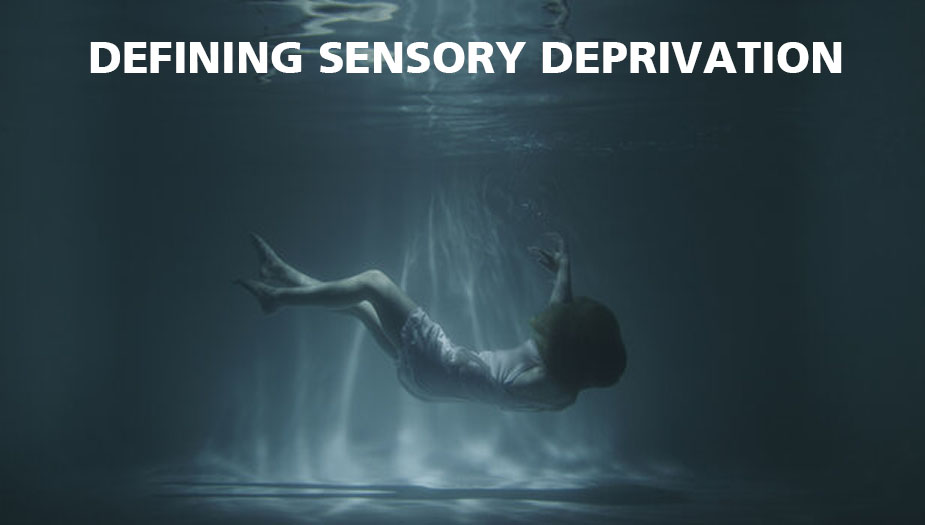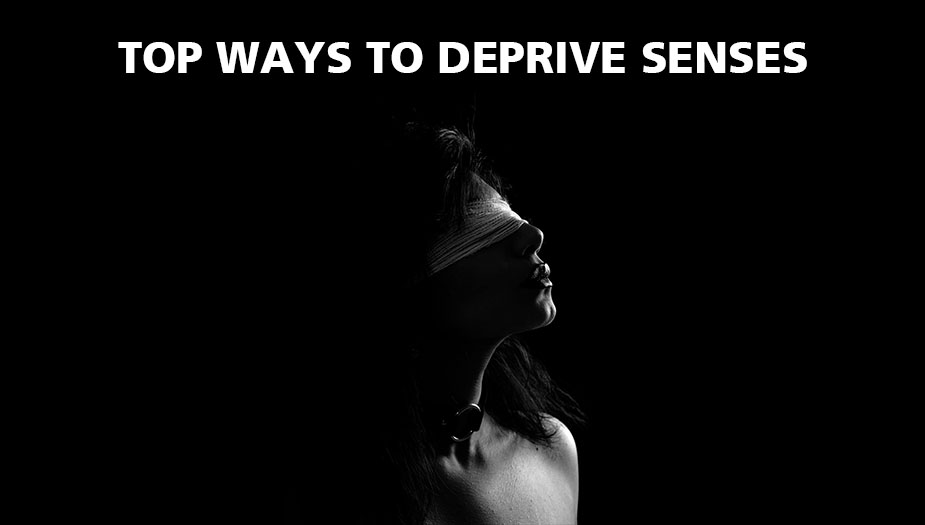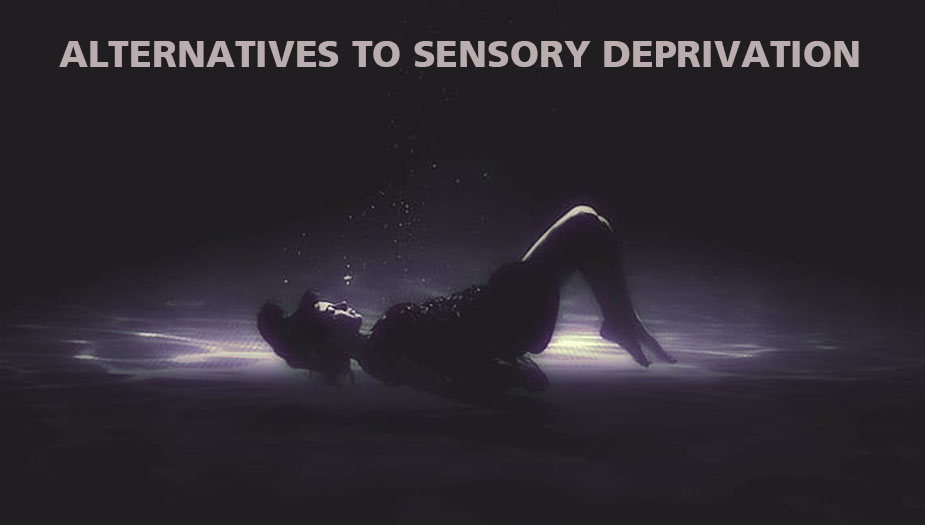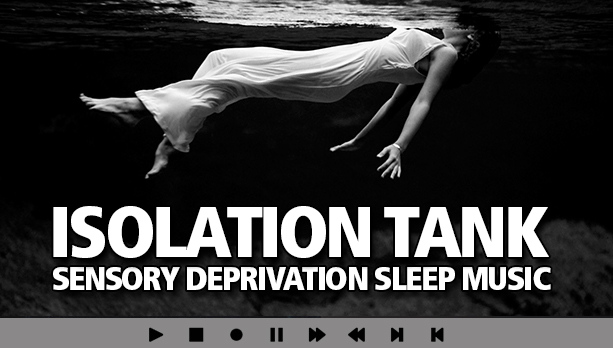History of Sensory Deprivation

From Float Tanks to Stress Chemistry. Embark on a journey through time as we unravel the intriguing tapestry of the History of Sensory Deprivation and isolation therapy. From ancient rituals to modern research, explore the profound impact of isolation on the human mind.
What is Sensory Deprivation?

Sensory deprivation, a profound psychological experience, involves isolating an individual from external sensory stimuli. Therefore, by eliminating sights, sounds, and often touch, the mind enters an uncharted realm. Historically used in ancient rituals and meditation practices to induce altered states of consciousness, sensory deprivation aims to explore the depths of the human mind. It can be a form of isolation therapy, a nice stress chemistry adjacent. In modern times, controlled sensory deprivation tanks or isolation chambers have emerged. For example, a float tank is filled with saltwater, allowing individuals to float effortlessly. Researchers also study sensory deprivation’s potential therapeutic benefits, from stress reduction to creativity enhancement. Understanding sensory deprivation unveils the intricacies of our senses and their influence on perception. As technology advances, this exploration continues, shedding light on the complexities of our cognitive and emotional landscapes.
The Past of Sensory Deprivation
The origins of sensory deprivation trace back to ancient civilizations. Early practices utilized sensory deprivation for spiritual introspection and altered states of consciousness. Shamans employed isolation therapy, removing themselves from sensory inputs to access higher realms. In more recent times, the concept was rejuvenated with the advent of float tanks. Immersing oneself in saltwater, float tanks offer controlled sensory deprivation, allowing individuals to disconnect from external stimuli. This modern take on an age-old technique has gained popularity as a stress-reducing tool. The root of sensory deprivation and stress chemistry goes back to ancient times. Exploring the ancient past of sensory deprivation underscores its enduring relevance. From ancient rituals to contemporary relaxation methods like float tanks, the thread of sensory deprivation weaves through time, offering insights into the human quest for inner exploration and tranquility.
The Future of Sensory Deprivation
The future of sensory deprivation holds promise. Evolving beyond its origins in isolation therapy and ancient rituals, modern innovations like float tanks have re-imagined the sensory deprivation experience. These tanks offer an oasis of tranquility, enabling individuals to disconnect from the cacophony of the world and immerse themselves in sensory isolation. The application of sensory deprivation is also expanding into the realm of stress chemistry research. Scientists are investigating how controlled sensory deprivation might influence stress responses and contribute to overall well-being. The float tank experience has caught the attention of wellness enthusiasts and researchers alike, suggesting that the future holds intriguing developments in stress management techniques. As technology and understanding progress, the future of sensory deprivation stands at the intersection of ancient wisdom and modern science, offering a potential path to inner peace and physiological balance.
Sensory Deprivation Methods

Sensory deprivation methods encompass diverse approaches to altering perception and exploring the mind. Isolation therapy, an ancient technique, involves removing external stimuli to trigger altered states of consciousness. In modern times, float tanks have gained prominence as a controlled environment for sensory deprivation. Researchers are intrigued by their potential, potentially aiding stress reduction and stress chemistry methods. Beyond float tanks, other techniques like meditation and soundproof chambers also contribute to sensory deprivation experiences. These methods allow individuals to delve into introspection, enhancing self-awareness and creativity. The spectrum of sensory deprivation methods, from ancient practices to innovative technologies, reveals our unending fascination with the mind’s inner workings. Whether for relaxation, therapeutic purposes, or self-discovery, these methods offer unique portals into the depths of human consciousness.
Using a Float Tank
Used as a form of sensory deprivation and isolation therapy, float tanks offer a unique experience for relaxation and self-discovery. Upon stepping into a float tank, the individual is buoyantly supported by warm saltwater, reducing the sensation of gravity. This immersion diminishes sensory input, providing a meditative environment that triggers altered states of consciousness. Modern float tanks are designed to create an environment that minimizes external stimuli, guiding the mind towards introspection. Research suggests that float tank experiences might aid in stress reduction and enhance mental well-being and are supplement to Stress Chemistry approaches. As an evolving wellness practice, using a float tank exemplifies the fusion of ancient wisdom and contemporary innovation. It offers a tranquil voyage into the depths of one’s mind, offering respite from the modern sensory overload.
What is Stress Chemistry?
Firstly, stress chemistry (comprising adrenaline, cortisol, and lactate) exits the bloodstream as endorphins take the stage—certainly nature’s intrinsic mood enhancers. This infusion of endorphins fosters joy, elevates well-being, alleviates chronic discomfort, and boosts cognitive functions like memory and learning. No specialized training is necessary; simply recline and release your mind and body. In a state of profound repose, the brain remains alert while detached from processing signals. This induces a dreamy, theta state, heightening creativity, and certainly inspiration. The float tank maintains you in this theta state throughout the session, an attainable feat otherwise limited to sleep. The float tank’s benefits are manifold for those leading demanding lives—lowering blood pressure and heart rate, mitigating tension-related ailments like migraines and insomnia, and enhancing self-control. To clarify, buoyancy in water bolsters mental and physical well-being, dissolving unwanted habits and negative emotions along with the stress they harbor.
What is Isolation Therapy?

Distinguishing between sensory deprivation and isolation therapy uncovers nuanced approaches to altering perception. While both involve disconnecting from external stimuli, sensory deprivation emphasizes minimizing sensory input to induce altered states of consciousness. Isolation therapy, on the other hand, extends beyond sensory isolation. It encompasses various techniques to disconnect from external triggers, delving into emotional and cognitive landscapes. In this context, isolation therapy might offer potential insights into stress chemistry and its impact on emotional well-being. The term “isolation therapy” can encompass a broader spectrum, including sensory deprivation practices. In essence, sensory deprivation is a subset of isolation therapy, where the latter encompasses a wider array of methods aimed at disconnecting from external influences. Understanding these differences sheds light on the diverse avenues available for exploring the depths of human perception and consciousness.
Emotional Isolation
Emotional isolation therapy, an advancement of sensory deprivation, navigates the intricate realm of emotions. By disengaging from external triggers, individuals enter a controlled setting to explore and process their feelings. Therefore, through this method, participants immerse themselves in an environment devoid of external stimuli. This experience may certainly have implications for stress chemistry, potentially aiding in managing emotional stress. Emotional isolation therapy highlights the complex interplay between external influences and our emotional responses. It provides a serene space to confront and comprehend our emotions, fostering emotional well-being and self-awareness. In a world awash with stimuli, emotional isolation therapy becomes a refuge for introspection and emotional healing—an invitation to delve into the intricacies of our inner world.
Social Isolation
Social isolation therapy, a modern interpretation of sensory deprivation, delves into the complexities of human interaction. Therefore, through temporary disconnection from social engagements, individuals enter a controlled setting to reflect and recharge. Above all, this therapeutic approach offers relief from the demands of social connectivity, potentially influencing stress chemistry and emotional well-being. Moreover, while sharing similarities with sensory deprivation, social isolation therapy centers on the absence of social stimuli rather than sensory inputs. Likewise, the practice presents a unique chance to detach from the constant demands of social interaction and to nurture self-awareness. Social isolation therapy sparks contemplation on the equilibrium between social bonds and personal reflection. Amid the modern buzz of interactions, this therapy provides an avenue to recalibrate, potentially enhancing emotional resilience and refining the capacity to navigate social intricacies with renewed vitality.
Sensory Deprivation Alternatives

Exploring beyond traditional sensory deprivation, sensory deprivation alternatives certainly offer diverse paths to altered states of consciousness. For example, isolation therapy extends this concept, allowing individuals to disconnect from stimuli and delve into introspection. Float tanks, for example, often associated with sensory deprivation, remain a cornerstone of these alternatives. However, isolation therapy encompasses a broader spectrum, including practices beyond float tanks. Likewise, this broader concept might contribute to managing stress chemistry and enhancing emotional well-being. To clarify, other alternatives include soundproof chambers and meditation practices, all seeking to create controlled environments for introspection. Above all, whether through float tanks or other innovative methods, individuals can embark on a journey of self-discovery and mental rejuvenation, tapping into the potential of altered states of consciousness. Meanwhile, binaural induction, can certainly be done by anybody, with just a pair of headphones.
Binaural Induction Therapy
Binaural beats, a novel avenue within sensory deprivation, emulate the effects of isolation therapy through sound. Unlike traditional methods, they rely on auditory stimuli to induce altered states of consciousness. I-Doser.com, the leading producer of binaural induction therapy worldwide, makes it incredibly easier to achieve. Moreover, these beats work by presenting two slightly different frequencies to each ear, producing a third tone that the brain perceives. This auditory illusion triggers brainwave synchronization, akin to states reached through sensory deprivation or isolation therapy. This technique showcases the expanding possibilities within sensory deprivation alternatives, demonstrating that the concept goes beyond float tanks or other physical environments. Likewise, this auditory journey provides a unique route to introspection, unveiling that sensory deprivation’s boundaries extend beyond the absence of sensory inputs.
The Art of Mindfulness
Firstly, viewed through a different lens, mindfulness can be perceived as a form of sensory deprivation, akin to isolation therapy. For example, while not involving physical chambers like float tanks, mindfulness cultivates an internal environment that minimizes external distractions. That is to say, mindfulness certainly creates a mental space where one disconnects from the constant influx of sensory stimuli. This intentional focus, often on the present moment, aligns with the goals of sensory deprivation and isolation therapy. Meanwhile, by reducing mental chatter and redirecting attention, mindfulness may influence stress chemistry and emotional well-being. In the broader context of sensory deprivation, mindfulness unveils a dimension where the absence of external stimuli occurs within the mind itself. This realization offers another facet to the diverse spectrum of practices aimed at exploring altered states of consciousness and nurturing well-being.
Have you ever used a float tank or embarked on other forms of isolation therapy or sensory deprivation? What does the future of sensory deprivation hold. Will concepts like the “flat tank” become common tools in our journey to self-discovery?
CLICK HERE TO SIMULATE EFFECTS OF SENSORY DEPRIVATION
TO ALL OUR READERS, today we humbly ask you to help our little blog. For over ten years now, BinauralBlog.com has been producing fantastic mindfulness articles. We do not beg for donations, use any intrusive popups, sell any form of user data, or fill our content with ads. How do we sustain ourselves? We need shares, plain and simple. The time has come for us to make a simple request. Please, if you enjoyed this article and want us to keep producing content - use any (or all) of the CIRCULAR SHARE BUTTONS ABOVE to help support our little blog. Thank you from the Binaural Blog, Founder & Team





I have used both. Used a sensory deprivation tank in cali and idoser brand binaurals with high quality audio equipment. They are different animals all-together but you can get some good sensory separation with quality entrainment. Somebody should really combine the two.
I have experience with brainwaves. Used to use the ones on youtube but they are so amateur I just figured they didn’t work. Then I tried a real binaural and wow – my mind was blown. I had a lucid dream in just a few tries with them. I don’t remember the brand. One of the major ones.
Been using i-doser since year one! Almost 10 years now. Wow. It integrated into my daily meditations and I wouldn’t get the same results without them. I haven’t explored the recreation side of it but I think that us more popular.
There was a tank in NY (think it closed) that integrated idose and flotation tank. I don’t think they had a license for the idose audio or something. There was a rumor it was just too intense to combine floating and idosing and too many people freaked out. This is all some Black Mirror stuff.
I am extremely impressed with your writing skills and
also with the layout on your weblog. Is this a
paid theme or did you modify it yourself? Anyway keep up the excellent quality writing, it’s rare
to see a great blog like this one nowadays.
I take pleasure in, result in I found just what I used to be looking for. You have ended my four day long hunt! God Bless you man. Have a great day. Bye
Hello there! I know this is somewhat off topic but I was wondering which blog platform are you using for this website? I’m getting sick and tired of WordPress because I’ve had issues with hackers and I’m looking at options for another platform. I would be great if you could point me in the direction of a good platform.
This blog post on sensory deprivation was… how do you say it? Relevant!! Finally I have found something that helped me. Many thanks!
Great info on sleep deprivation – what you say is fundamental and all. Would love even more posts on using deprivation for meditation and mindfulness. Wonderful blog!
My brother recommended I might like this web site. He was entirely right. This post truly made my day. You cann’t imagine simply how much time I had spent for this information! Thanks! I have been interested in water therapy and isolation meditation for a long time and there is not much information on it.
Hello. And Bye.
Wonderful article altogether, you received a new reader. I have always wanted to try water sensory deprivation and have been looking for a place to do it. This was very informative.
Heya i am for the first time here and just learning about isolation and therapy. I came across this and I find It really useful; it helped me out a lot. I hope to give something back and aid others like you helped me with your sensory deprivation article (and many others) on binaural blog.
I have actually tried this kind of sensory water and deprivation meditation before at a local spa here. It wasn’t my thing but I got a 3 time sessions. By my 3rd try I was hooked. I go to a tank about 4 times a year now. Highly recommended. I would be happy to answer any questions anybody has.
Very interesting. So you just kind of sleep in a tank of water? Has anybody ever done this? What does it feel like? I am interested in trying this but there are no places where I live that do it? Could we do it at home in a tub or pool or something?
This is a really good introduction to water tanks and sensory deprivation. Really enjoying this blog. Thank you.
Hi there! This is my 1st comment here so I just wanted to give a quick shout out and tell you I genuinely enjoy reading through your blog posts. Great stuff on sensory deprivation (which I only tried once in a friends homemade water tank). Thank you!
I have tried water tanks in the US and have considered getting one installed in my house. Truly amazing.
Thank you for this. I always wanted to try it and was looking for more information.
I’ve done professional isolation tanks. Was expensive but truly introspective and somewhat like hallucinating.
Thank you for sharing your thoughts. I really appreciate your efforts and I am waiting for your further write ups thanks once again.
every day I spend half an hour reading this website’s content along with a cup of coffee. Thank you